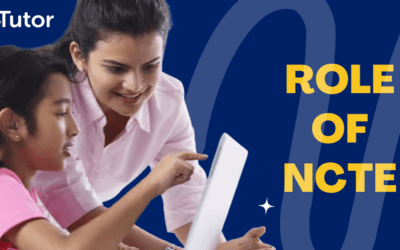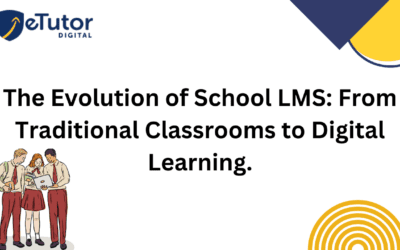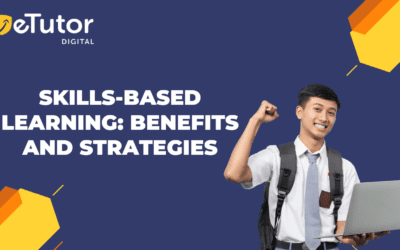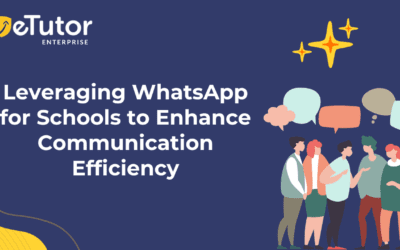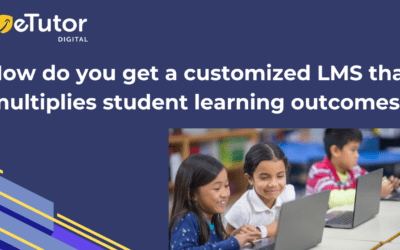Blended Learning – Types, Uses and Benefits | eTutor
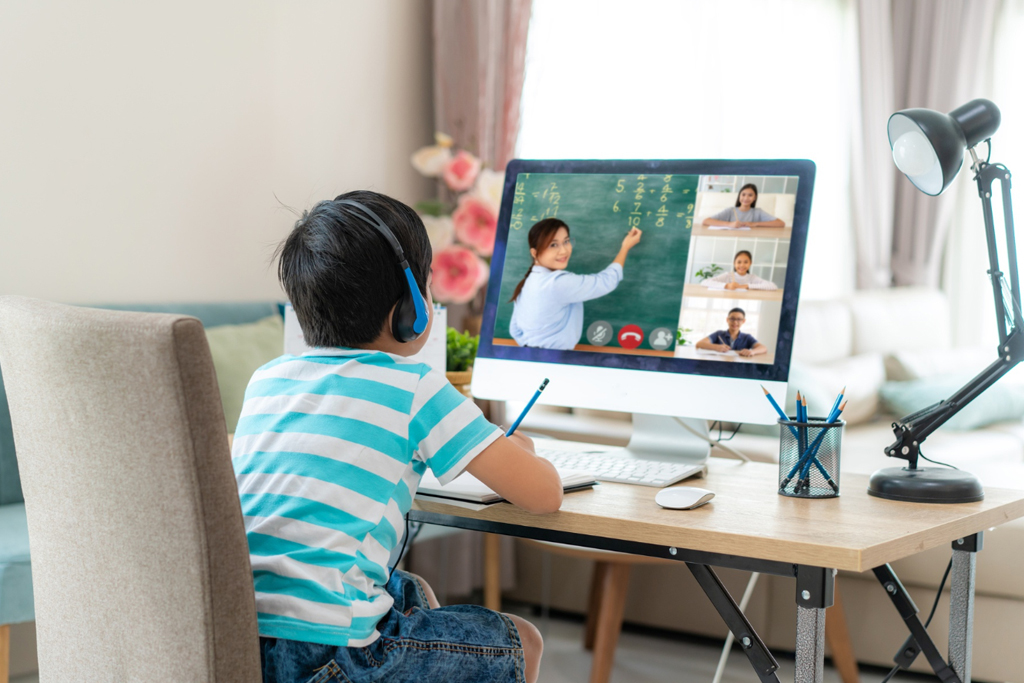
Table of contents
Introduction
What is blended learning?
Types of blended learning models
Benefits of blended learning with an LMS
Features Of Blended Learning
Who Needs Blended Learning
Conclusion
Frequently Asked Questions
Introduction
With new technologies and strategies, the education system has undergone rapid changes. Simplified integration of classroom learning with emerging technology trends has provided qualified output.
In this article, we will dive deep into blended learning with technology integration, its types, benefits, key features and who gets help from blended learning.
What is blended learning?
Blended learning is an approach to education that combines online learning with traditional, face-to-face classroom instruction. Blended learning can take many forms but typically involves a mix of online and offline activities designed to complement and enhance each other.
Blended Learning Example: Blended learning might involve online resources to deliver lectures and course materials while incorporating in-person activities such as group discussions and hands-on exercises. By using technology to streamline the learning process and optimize the use of resources, blended learning can help to improve student outcomes while reducing costs and increasing efficiency.
7 Different types of blended learning models
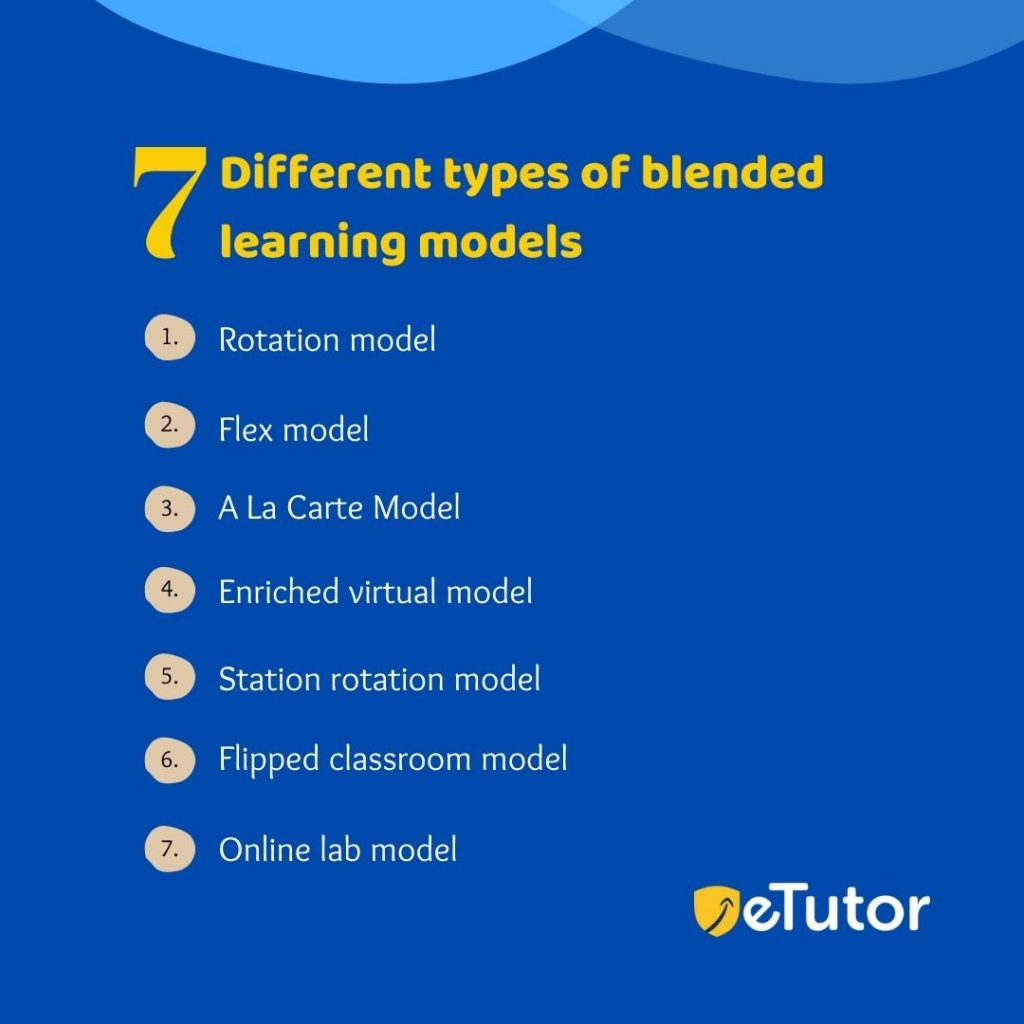
Depending on the objectives of the learning and the needs of the learners, a variety of blended learning models can be implemented. The different types of blended learning models are:
Rotation model: In this model, students go through several learning stations, some of which offer online training, and others provide in-person instruction.
Flex model: The flexibility model gives students much freedom to choose when and where to finish their online learning activities. Most of their learning occurs online, while they occasionally have scheduled in-person interactions with teachers or peers.
A La Carte Model: The A La Carte concept allows students to select specific online courses and their regular in-person classes.
Enriched virtual model: Enriched virtual learning environment: In this environment, students participate in traditional face-to-face classrooms and online learning exercises on other occasions.
Station rotation model: Student rotation through a succession of learning stations is what this model, also known as station rotation, does. However, at least one station in this paradigm incorporates online education.
Flipped classroom model: The flipped classroom strategy involves having students watch video lectures or finish online learning tasks before class and then working on practical or collaborative exercises that apply what they learned online.
Online lab model: In this model, students do most of their courses online but occasionally need to visit a real lab or learning facility for hands-on lab work or classroom teaching.
Benefits of blended learning with an LMS
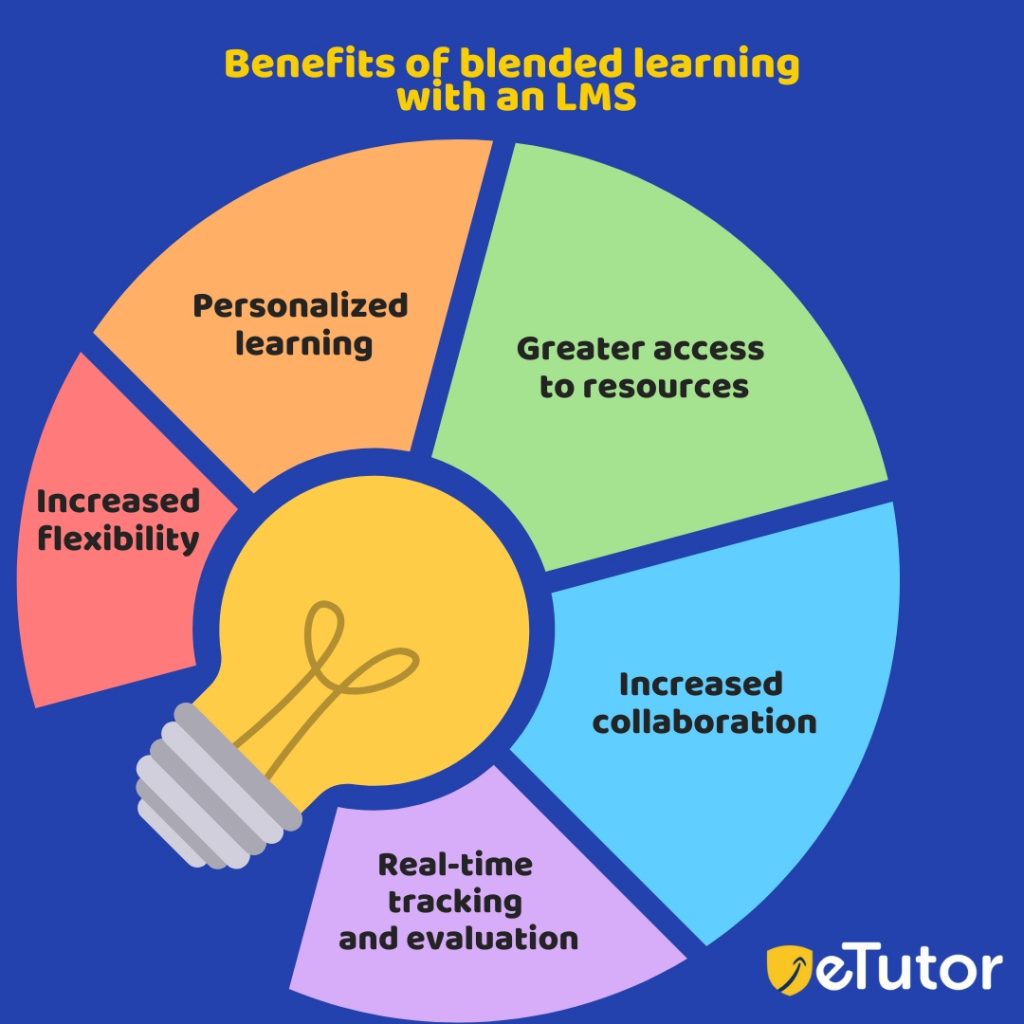
When utilized with a learning management system (LMS), blended learning—combining traditional classroom instruction with online learning—can offer several advantages.
Some of the main benefits of blended learning using an LMS are as follows:
Increased flexibility:The ability to learn at their own pace and on their schedule, thanks to blended learning, gives students more flexibility, which can help them balance their academic obligations with other commitments like employment or family.
Personalized learning:Learning experiences that are personalized and catered to specific students’ requirements and learning preferences can be delivered through an LMS. It could boost engagement and enhance learning results.
Greater access to resources:An LMS can give students access to a variety of resources, including online lectures, videos, interactive simulations, and examinations. Due to this, they can learn the content better and more thoroughly.
Increased collaboration:An LMS can help students and teachers communicate and work together by allowing them to share ideas, feedback, and resources in real-time. Students may benefit from developing crucial communication and interpersonal skills in this way.
Real-time tracking and evaluation:An LMS can monitor student development and performance in real time, enabling instructors to provide prompt feedback and assistance. It can assist pupils in staying on task and addressing any learning difficulties or gaps as they materialize.
TIP: TRY eTutor
Looking to enhance your learning experience and streamline your educational processes?
Features Of Blended Learning
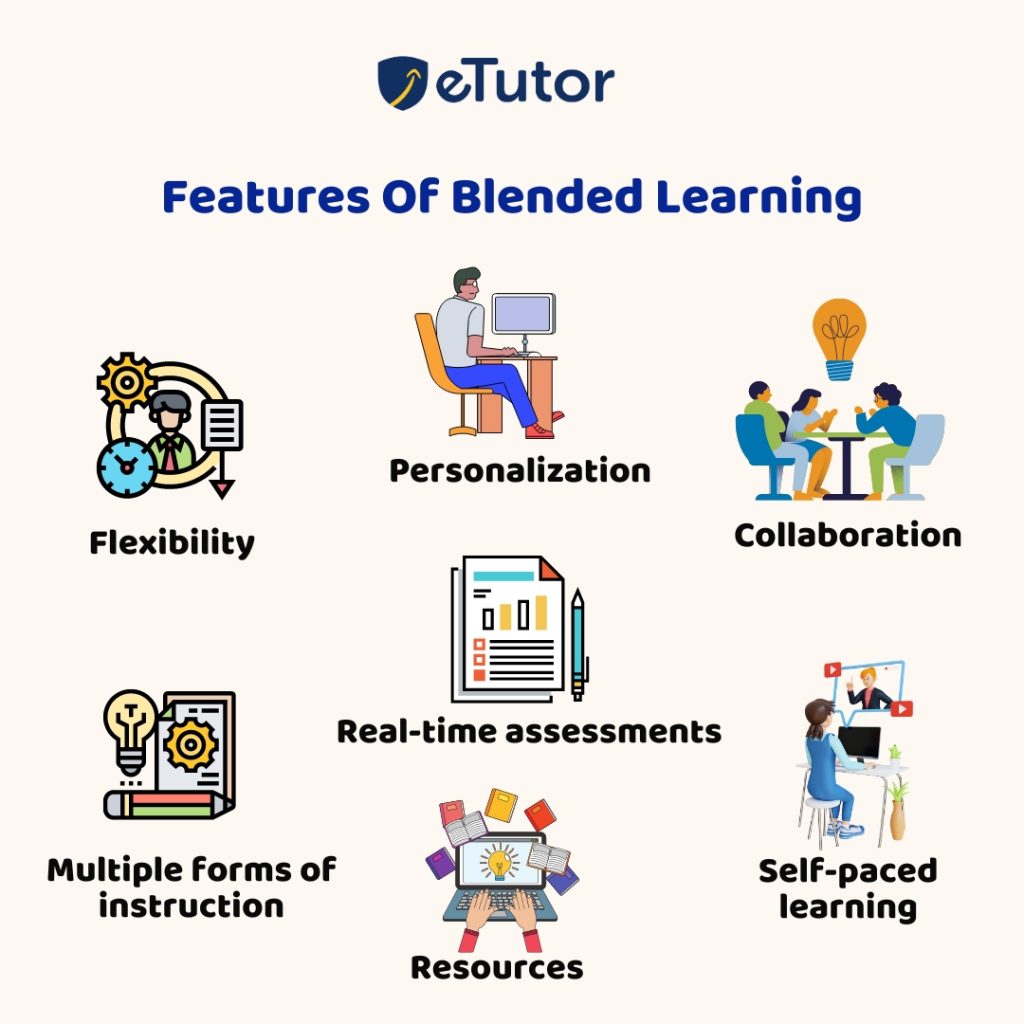
Some of the critical features of blended learning are as follows:
Flexibility:Blended learning allows for time and place flexibility, enabling students to access course materials and resources from any location.
Personalization:Blended learning can be tailored to meet specific students’ needs and learning preferences, resulting in a tailored educational experience.
Collaboration:By enabling real-time communication and engagement, blended learning can support collaboration between students and teachers.
Multiple forms of instruction:Blended learning can integrate various forms of education, including traditional classroom instruction, online lectures, video tutorials, interactive simulations, and interactive simulations.
Real-time assessments:Blended learning can offer real-time evaluation and feedback, enabling students to monitor their development and get rapid feedback on their performance.
Resources:Blended learning gives students access to a variety of resources to aid with their education, including multimedia content, online databases, and interactive tools.
Self-paced learning:Blended learning enables students to proceed through the course materials at their own pace, allowing them to spend more time on complex ideas or rush through material they find simple.
Who Needs Blended Learning
Blended learning can benefit a wide range of learners, including:
K–12 students:Due to their potential diversity in learning preferences and styles, K–12 students can benefit most from blended learning. Blended learning can enhance students’ learning results by giving them a personalized, independent, interactive learning experience.
Students in colleges and universities:Blended learning can be utilized to enhance conventional classroom instruction in higher education while giving students access to various multimedia resources, online discussions, and interactive simulations.
Adult learners:Blended learning can offer flexible and accessible learning options to adult learners, who may be constrained from attending traditional face-to-face classes due to work or family obligations.
Teachers and educators:Using blended learning to offer professional development and training opportunities, they can improve their knowledge and abilities in a flexible, self-paced setting.
Corporate professionals:Corporate and business professionals can use blended learning to offer employees training and development opportunities, allowing them to pick up new skills and knowledge while working.
Conclusion:
The effectiveness of blended learning has been demonstrated, and it is a method of instruction that is gaining popularity in schools. But it’s crucial to ensure all students can access and use the technology used in blended learning and that teachers and students receive the necessary assistance and training.
Frequently Asked Questions
Author: Saritha Reddy
Website: https://www.etutor.co
Recent Posts
- How School ERP Software Maximizes Productivity and Minimizes Cost
- How Does ERP Software for Schools Help Educators?
- Why Educational Institutions Need Online Exam Software in 2025
- How Is AI-Based ERP Software Transforming School Administration?
- Latest IIT-JEE & NEET Exam Trends 2025 | Key Changes in JEE, NEET 2025 Exams By NTA

